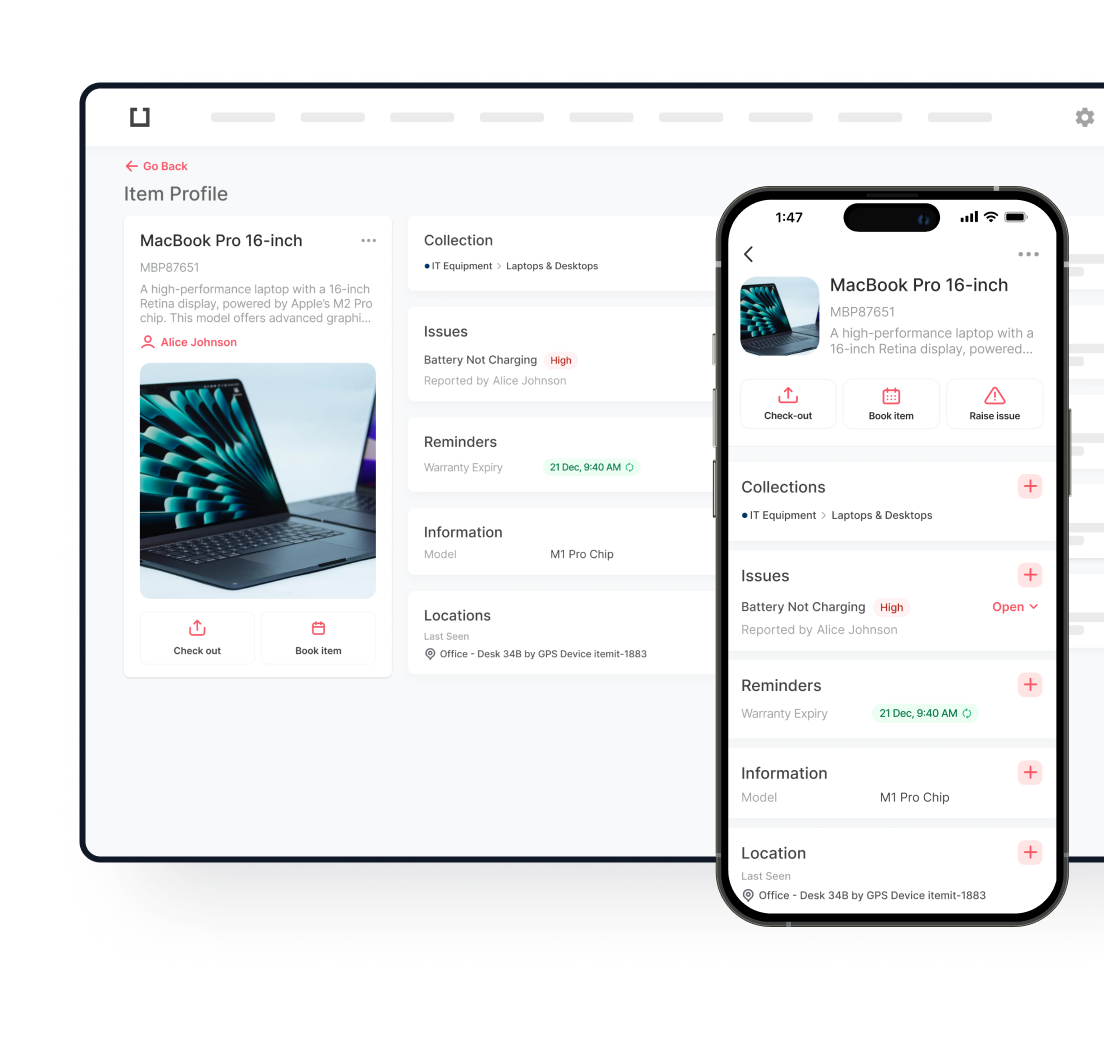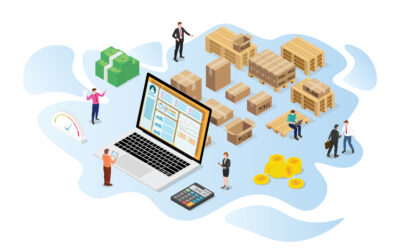
What Is IT Asset Management?
Unlocking the potential of managing its assets requires an understanding of its scope. Envision has a well-defined IT ecosystem map, where each piece of software and hardware blends in perfectly with the overall scheme. Even the most complex configurations can be handled with the correct tools, creating a more unified and productive workplace.
How Asset Management Software Can Help You
1. Create an Asset Inventory
The first step in using IT asset management software is to compile a thorough inventory of all IT assets. This phase is important because it gives you a full picture of the resources in your organisation. Whether it’s a desktop computer, server, software license, or peripheral device, cataloguing every asset makes sure nothing is missed. Assigning accountability is made simpler by the software’s capacity to track asset ownership in addition to recording crucial information like purchase date, warranty duration, and serial numbers.
2. Tracking
To keep an eye on IT assets at all times, use an IT asset management system. Financial data (asset costs), contractual data (warranties, licenses, and service-level agreements), and inventory data (location and condition of physical assets) are all gathered in order to track each asset. By preventing any bottlenecks or disruptions, this degree of monitoring guarantees that you always have up-to-date information on asset status.
Furthermore, tracking features go beyond tangible objects. You may also keep an eye on virtual assets, such as cloud subscriptions and virtual machines, which provide you a comprehensive picture of your IT environment. This enables organisations to make the best use of both on-premises and cloud-based resources while adjusting to the increasing popularity of hybrid work environments.
3. Maintenance
By using an IT asset management system, you can keep track of when licenses expire and when updates, repairs, and upgrades are needed, preventing asset downtime. The software lowers human error and guarantees consistency in maintenance schedules by automating these procedures. Moreover, thorough maintenance logs enable you to investigate performance patterns and spot persistent problems. This proactive strategy assists with successful budgeting and future need forecasting in addition to prolonging the lives of assets.
4. Centralised Visibility
The capacity of IT asset management software to offer centralised visibility into your IT ecosystem is one of its best features. The same current information is available to all stakeholders, including finance teams and IT staff. Decisions are made using correct, shared data thanks to this transparency, which also promotes teamwork and breaks down silos.
5. Compliance and Risk Mitigation
Concern over regulatory compliance is rising among businesses of all kinds. Serious fines and harm to one’s reputation may result from noncompliance. IT asset management software tracks important data, including license agreements, warranties, and data consumption. So your company stays compliant. You may reduce the chance of oversight by staying ahead of compliance deadlines with the help of automated notifications and reports.
6. Cost Optimisation
Managing IT assets effectively involves more than simply organisation; it also involves optimisation. The program assists organisations in reducing wasteful expenses by offering insights into assets that are underutilised or redundant. For example, you can cut back to save money if particular software licenses are hardly used. In a similar vein, recognising overworked hardware might help you plan upgrades or reallocate resources to avoid expensive failures.
IT asset management software turns asset tracking from a reactive task into a proactive one by combining these features into a single platform. An organisation that is more flexible, effective, and progressive is the end outcome.
Why You Should Use Asset Management Software to Track IT Assets

Track Licences
You can configure automated reminders and notifications for license renewals, upgrades, or expirations by entering your license information into the system. By doing this, the uncertainty is removed, and the dangers of using unlicensed software are reduced. Additionally, it makes tracking organisational or multi-user licenses easier, guaranteeing effective resource allocation. For example, underutilised licenses may be repurposed or reduced, which would cut down on wasteful spending.
Furthermore, using specialised software to track licenses gives you a better picture of the patterns in software usage within your company. Are there any premium applications that aren’t being used? Do certain tools need more licenses in order to satisfy the increasing demand? You may maximise both cost and performance by making well-informed judgments with this knowledge. In essence, the software serves as a digital protector of your efficiency and compliance.
Improve Lifecycle Management
The purchase phase, when judicious selection can result in long-term savings, is where asset lifecycle management starts. Organisations can use IT asset management software to analyse past data and make well-informed purchasing decisions that guarantee cost-effectiveness, compatibility, and longevity.
Assets need to be continuously monitored and maintained after they are deployed. Lifecycle management really excels in this situation. Scheduling updates, repairs, and upgrades in advance guarantees optimal asset performance and reduces downtime. Additionally, monitoring performance indicators makes it easier to determine when an asset is no longer cost-effective, allowing for prompt replacements prior to breakdowns.
Increase Productivity
By cutting down on inefficiencies and redundancies, a well-integrated IT asset management system simplifies operations. Think about the time and effort saved, for instance, when staff members are not required to manually monitor hardware or resolve unexpected license expirations. Important hours that may be better used on strategic projects are freed up by automated tracking and notifications.
The ability to closely monitor asset performance provides yet another important productivity gain. Organisations can prioritise upgrades that yield the highest return on investment by identifying obsolete or underperforming equipment. On the other hand, identifying high-performing assets makes it easier to duplicate their achievements in other divisions. In the end, this optimised asset usage strategy results in a more robust and effective organisation.

From Understanding to Action
itemit's IT Asset Management Software
By leveraging technology, you’re not just managing assets—you’re setting the stage for innovation and growth as one section flows seamlessly into another, your journey through IT asset management evolves from understanding to implementation, and finally, to mastery. Take the first step today and transform your asset management experience.
To find out more about how itemit’s IT asset management software can help you track your assets, you’ll be able to contact the team at team@itemit.com. You can also fill in the form below to start your own 14-day free trial.

Try itemit
Choose a better way to track
your assets.
Start your free 14-day trial now!

Latest posts
itemit Blog
Tips, guides, industry best practices, and news.
Inventory Planning Best Practices: Avoid Stockouts and Overages with Asset Tracking
Discover inventory planning best practices to avoid stockouts and overages. Learn how asset tracking improves accuracy, reduces waste, and optimizes supply chain management.
Markup vs. Margin Difference: Optimise Inventory Profitability
Learn the key differences in margin vs markup in inventory management. Understand how each affects pricing, profitability, and business growth to optimize your strategy
How to Optimise Product Inventory Management
Learn how to optimize product inventory management with effective strategies, a product inventory management system, and best practices for efficiency.


